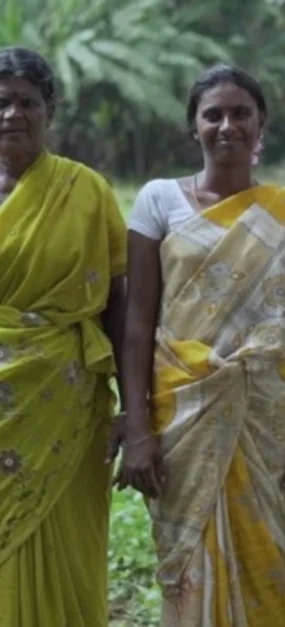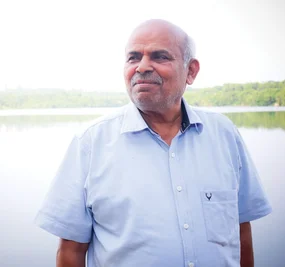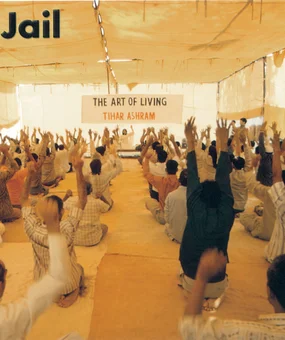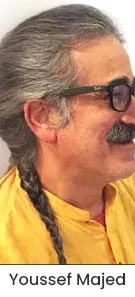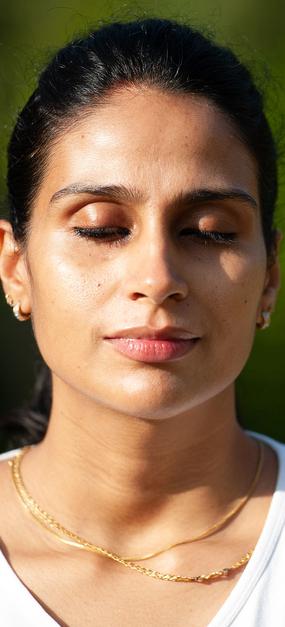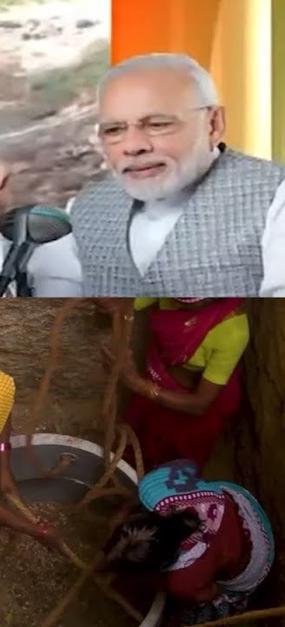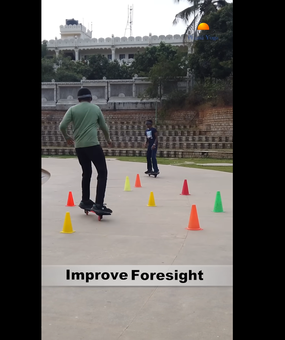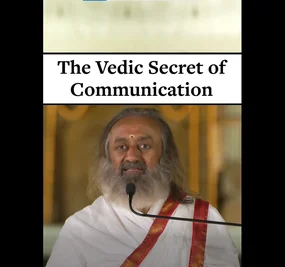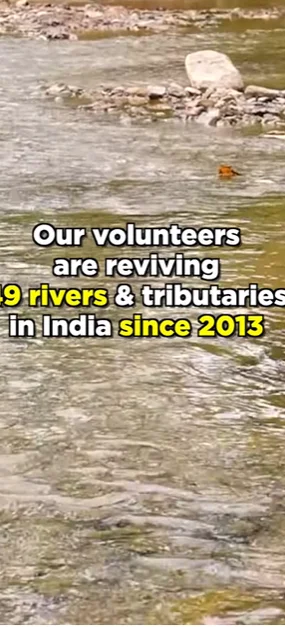How one man united 20,000 women to revive Tamil Nadu’s pivotal Naganadhi river
I was in a meeting when a friend texted me: Prime Minister Narendra Modi just spoke about your Naganadhi river rejuvenation project on Mann Ki Baat (the Prime Minister of India’s radio show). My chest swelled with pride. For the 20,000 gusty women and all the people who made it possible for a river dry for 20 years to flow. Next day, several news channels contacted me to learn about the project. A news channel even covered my story – how a former electrician came to spearhead a river rejuvenation project of this scale.
From fixing fans to reviving rivers
My story starts in a school in Chennai where I worked as an electrician.
One day, I was helping with the logistics of a program of The Art of Living at the school. After arranging and testing the mic and sound, I sat outside as the session commenced. Moments later, curiosity got the better of me and I quietly stepped inside. The teacher noticed immediately and seeing me interested asked me to continue for all six days; even offering to lend me the course fees.
In the coming days, the program’s techniques cured my stomach ulcers that had been nagging me for years. So intense was the pain of the ulcers that I’d call my doctor at midnight and shout at him. I would tell him that his medicines are of no use and he is unfit to be a doctor! On the last day of the six-day course, I found a big relief from the pain.
Soon, I became a teacher of The Art of Living programs and got involved in several service projects run by the organization. That is when I got to know about The Art of Living’s river rejuvenation projects in Maharashtra and Karnataka. Their success stories enthralled me. Rivers dry for two decades were now flowing and farmers who once did not have water for irrigation were growing two crops.
I wanted to do something similar for my native village. However, life had bigger goals.Experts from the river rejuvenation team suggested we start work in Salamanathan, a village near my native village, on a tributary of the Naganadhi river.
The Naganadhi’s urge to flow v/s us
The Naganadhi river was once the lifeline of Vellore district. Once gushing through the plains with full force, it was now dry for the last 20 years. The only sound that came from her was of the ricocheting wind. The rainwater ran off the land, depriving her of the water that she once carried with full gusto. The condition of the groundwater was not any better. Farmers were suffering, villagers were migrating and people in some parts of the district did not even have water to drink.
There was an urgent need to act.
I requested a meeting with the president of the Salamanatham village to talk about the pilot project. But the president was too busy. He kept me waiting for weeks. But I persisted. I spoke to the president of the neighbouring village who recommended me to him. He gave in and we started with the work.
The year was 2014. The Art of Living team of volunteers dug 5 recharge wells and built 3 boulder checks. After three months, when the rain gods showered their blessings, the water did not run off unlike earlier times. There was a stream of water flowing! A tiny part of Naganadhi had just come alive. Also, wells that were dry for the last 15 years now had water. The village president who had been ignoring me all this time rang me up and congratulated us.
The project motivated me to do this at a bigger scale. But for a big project, you need manpower. I approached the project director of Rural Development Agency for getting villagers to work for the project under the Mahatma Gandhi National Rural Employment Guarantee Act (MNREGA, a government scheme to facilitate rural employment).
Amused at our vision of reviving the Naganadhi, with the help of people under MNREGA, the Project Director simply said, “This is not possible. The women won’t be able to do this.” There was a general impression among government officials that MNREGA people may not be able to achieve this feat. They had no idea that their belief was about to take a summersault in a few months’ time.
I nevertheless continued talking about The Art of Living, its programs and its wide array of service initiatives. And something clicked. He requested for a three-day Happiness Program for his team for which I happily agreed. At the end of the program, he sent his engineers to the project site. Was it the energy shift during the program or Naganadhi’s urge to flow: what changed his mind in three days is something we’ll never know.
When digging 20 feet is play!
The fragrance of payasam, South India’s favorite sweet delicacy, wafted amidst lively songs for the Divine and clanking of cymbals. The hosts of the celebration were a group of 10 middle-aged rural women wearing bright-colored sarees, and even brighter smiles.
Of the 1,000 women engaged by the MNREGA for the project, they had just dug the project’s first recharge well. After that it became customary for everyone to celebrate after the digging of a recharge well.
Yet, the first time the women were told to dig 20 feet deep, they just could not believe they could do it. But they did. Not just one, but they built 349 recharge wells and 200 boulder checks spread over 20 Gram Panchayats over the course of a year. Their work also included constructing huge cement rings and inserting them inside the well.
Clearly, the women established the age-old belief of India that women can do everything and anything. It was reassuring for the Project Director of the Rural Development Agency too. The Happiness Program which we conducted as part of their capacity-building training played a big role. It improved their fitness and mental strength.
And then it was the motivation. Whenever the women found something hard, I told them to take it as a challenge on their playground. So, the women took their work as play and sadhna (spiritual practice). Because one thing I told them very clearly at the beginning of the project: they were not laborers but women who were about to give life to a river.
Going all over Vellore, and Tamil Nadu
The year was 2016. The hard work of the 1,000 women paid off when the groundwater levels rose. The same groundwater would later run into the Naganadhi. The news spread and soon we were going all over Vellore.
During that time, I traveled 100-200 kms daily on bike or used public transport to meet villagers, government officials, volunteers, technical experts and so on. During my travels, I urged villagers to see the grim condition of water. “If we don’t do anything now, the place will turn into a desert in the next 25 years,” I’d tell them.
Soon, there were 20,000 women working all over Vellore to revive Naganadhi. Over the next three years, the women built 3,700 recharge wells and several boulder checks all over the district. The then District Collector of Vellore, SA Raman conducted regular review meetings and ensured the success of the project.
Finally, we all saw what we had been working for all these years: the flow of the beauty called Naganadhi! Even after six months of a rain shower, the river today still gushes through the district.
The project became famous all over Tamil Nadu and later all over India with PM’s Mann ki Baat. The following days were spent taking project orders from district collectors of different districts in the state. Gurudev Sri Sri Ravi Shankar (the global humanitarian, peace ambassador and our inspiration) vision to revive rivers had suddenly become not just our team’s vision, but that of everyone’s. The energy was palpable. While going to receive a work order from one district collector, I’d get a call from another. Once, I got the project order at 8 pm for a district after meeting with him at 4 pm.
Now, we are working in eight districts of Tamil Nadu with the help of 40,000 village folks. 99.9% of them are women.
A life of gratitude
During all this time, my life has become one of gratitude. When the first pilot project ran a success, my wife conceived after years of waiting. I have built a home in Vellore, my son is going to school, my family is happy – I owe this all to Gurudev. I am also able to help village folks who often come home when they face trouble with money and want work. I get them to work on our projects through MNREGA.
Recently, I was invited as a chief guest to the school where I worked as an electrician. From setting-up public address systems to becoming the one who would address the people through the same public address system, it has been all because of Gurudev’s guidance, grace, and inspiration .



